Enhancing Durability
Numerous tests for excellent durability
To ensure a customer can use our products for as long as possible,Nissan carefully checks vehicle long-term performance from various perspectives.
Making a vehicle that will not rust
The salt damage test is conducted to evaluate and confirm the durability against "rust“, such as the phenomenon of metal corrosion due to the influence of the components contained in water and air. In order to evaluate “rust resistance” over long-term use, we simulate the deterioration condition of several years in a short period of time using a special test method that accelerates corrosion.
Specifically, using prototype vehicles we complete tests such as spraying a concentrated salt-water mixture onto a vehicle and then leave it in a hot, humid, sauna like room.In addition, vehicles are driven many times on a gravel road test course containing multiple water puddles. These tests are set up in an area that is known for causing severe salt-damaged to vehicles.
Prototypes that have been tested are then disassembled so each metal panel can be checked. If rust occurs earlier than expected, we will review the material used and change the structure to improve corrosion performance.
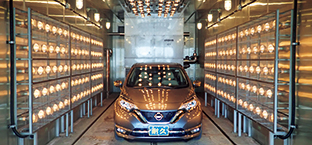
Salt damage endurance test
Alternating between the salt spray room and the hot, humid room, after driving on a mud-covered road. Reproduce the usage of "the life of the vehicle" in a short period of time and check whether rust occurs.
Strength performance confirmation
Considering real-world driving conditions, tests are conducted to check for damaged parts when a large force is applied to the tire. For example, if a vehicle inadvertently impacts a sidewalk or a curb in a parking lot. These tests are conducted to confirm the vehicle strength in these scenarios.
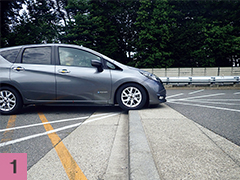
1. Have you driven on to a curb unexpectedly? We check vehicle undercarriage strength in various situations to ensure driving performance even in unexpected situations.
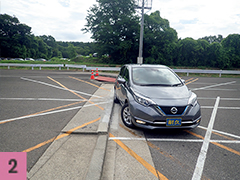
2. Duplication test simulating a vehicle that slips on a wet or snowy road and the tire impacts the curb of the sidewalk.
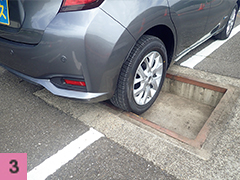
3. Duplication test of accidentally driving into a deep hole.
Reliable quality check from the hot weather to the extreme cold
We are conducting tests in a dedicated facility to identify if any kind of deterioration occurs inside and outside the vehicle in both extremely hot or cold environments.Many vehicle parts consist of resins and rubber materials that are relatively sensitive to temperature changes and ultraviolet rays. Utilizing a thermostatic chamber, the effects of ultraviolet rays and temperature rise due to sunlight as well as deterioration due to low temperatures are all checked. We can duplicate various environmental conditions without going to an actual location such as the scorching temperatures of Arizona in USA or frigid temperatures of Russia where it is occasionally 40°C below zero.
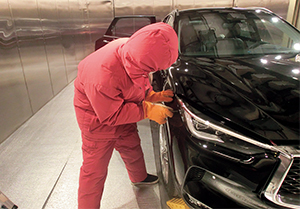
Solar radiation
Many people have experienced a steering wheel that is too hot to touch when parked under the blazing sun. In solar radiation experiments, the surface temperature of the dashboard is 100°C or higher and damage in these harsh conditions is checked.
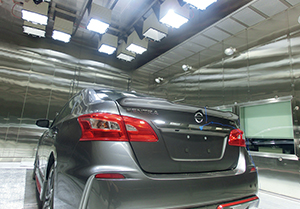
Low temperature
In the thermostatic chamber, low-temperature experiments down to 40°C below zero can be tested. Since it is necessary to check the vehicle while maintaining low temperatures for accurate evaluation under these extreme conditions, the engineer conducting the evaluation is required to wear winter weather clothes.
To check for deterioration concerns, strains of resin bumpers and headlight lenses, and plated parts such as grilles and emblems are also subject to inspection.In addition, there are a wide variety of interior parts such as dashboards, door trims, floor carpets, switches, and recently a camera cover located at the top of the windshield for advanced safety equipment that has been added to the inspection list. The results of the test are feedback to the design, along with appropriate suggestions on measures to prevent deformation and damage.
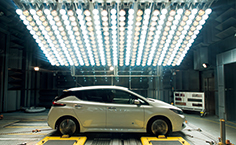
Air conditioning test
A low temperature solar radiation laboratory, similar to the thermostatic chamber, is used to evaluate air conditioner system performance. Nissan has facilities that can conduct experiments according to specific weather conditions in various regions of the world to confirm vehicle reliability even in extreme conditions.

